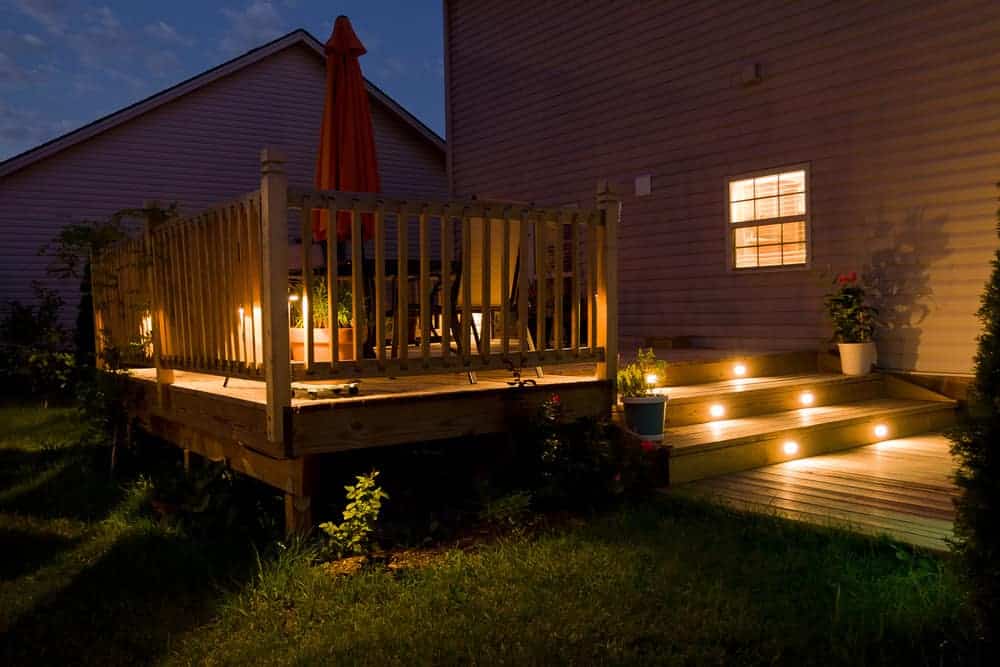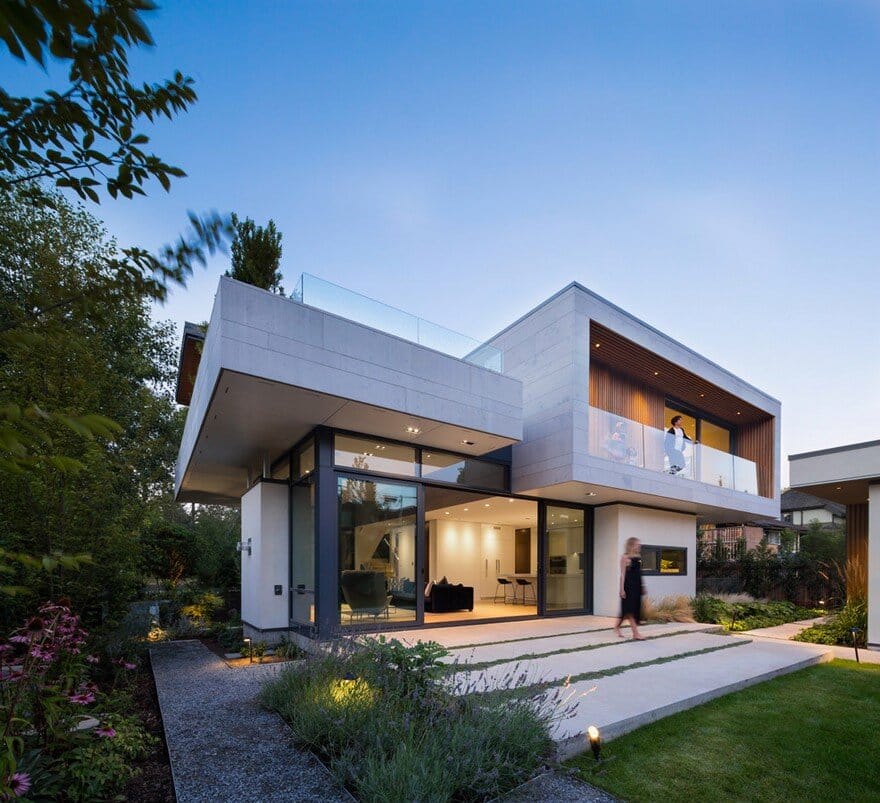
Creating a functional outdoor lighting system can be both a fun and rewarding project that can save you a lot of money in the long run. Outdoor lighting systems are essential for security and aesthetic purposes. With the right lighting systems, you can enjoy your outdoor space at night and enhance its beauty.
Installing an outdoor lighting system can be daunting, requiring careful planning and preparation. For starters, it helps when you hire an expert to help you with your outdoor lighting needs. They’ll help you choose the best lighting and design its placement to achieve your desired results. If you live in Canada, you can find many companies that offer custom, modern outdoor lighting in Vancouver WA.
To help you further, this step-by-step guide will give you the knowledge and tools you need to create a lighting system that will be both aesthetically pleasing and practical. It will cover everything from choosing the right fixtures to wiring and maintenance.
Definition Of Outdoor Lighting Systems
An outdoor lighting system consists of lamps and other lighting fixtures placed outside to improve visibility and safety. Garden and patio settings can also benefit from their aesthetic qualities. Additionally, the system can illuminate outdoor elements such as sculptures, trees, and more. Solar, low-voltage, or LED technology can power the lighting system.
Different Types Of Outdoor Lighting Systems
Outdoor lighting systems provide a range of benefits, from enhancing the security of your property to creating a more inviting atmosphere for outdoor activities. Various outdoor lighting systems are available, each with unique features and benefits.
1. Landscape Lighting
Landscape lighting is used to create a beautiful and inviting atmosphere. It’s used to highlight shrubs, trees, and other landscaping elements. Landscape lighting can also be used to create a peaceful atmosphere or make a statement.
2. Security Lighting
Security lighting is designed to deter intruders and provide a level of safety. It is typically used in conjunction with motion sensors and can be used to light up areas of the house or yard.
3. Deck Lighting
Deck lighting creates a relaxed and secure environment for evening get-togethers in the great outdoors. Deck lights typically have a low voltage and can be found in various designs and colors.
4. Flood Lighting
Flood lighting is a great way to illuminate large areas, such as driveways, parking lots, and outdoor sports fields. These lights are usually mounted on poles and can be adjusted to provide the desired illumination level.
5. Step Lighting
Installing step lighting is an excellent option for illuminating stairways and other passageways. An everyday use for these lights is to illuminate the walls or steps with a gentle glow.
Depending on your needs and budget, you can choose the best option for your outdoor lighting needs. However, you may require a combination of most, if not all, of the different types of outdoor lighting systems, as has been done for this home project. The project used landscape, flood, and step lighting to achieve a unique outdoor experience. Watch the video for better context here:
Steps To Create A Functional Outdoor Lighting System
Creating a functional outdoor lighting system requires careful planning and preparation. Here are the steps to creating a properly functioning outdoor lighting system:
Step One: Choose The Type Of Lighting
The first step to creating a functional outdoor lighting system is determining what type of lighting fixtures you need. As discussed above, various outdoor lighting fixtures are available, so it’s essential to consider what kind of lighting suits your needs.
Also, consider the size of the area, the type of lighting you would like to use, and the number of lights you need. Depending on the area you’re lighting, you may need to install multiple fixtures to create the desired effect.
Outdoor lighting can be solar-powered lighting, low-voltage lighting, or LED lighting. There are also various bulb types you must choose from. They include LED, halogen, fluorescent, and incandescent. These light fixtures will vary according to your budget and energy efficiency.
Solar-powered lighting is powered by the sun, which means that it will help reduce your utility bill. Solar power lighting installation costs may be higher than for other types of lighting. On the other hand, low-voltage lighting uses a transformer to reduce the voltage of the power source. LED bulbs are particularly energy-efficient and can last for many years, making them an excellent option for many homeowners. Most LED lights can last up to 50,000 hours.
Step Two: Calculate Your Lighting Load
After you’ve figured out the type of lighting fixtures and their placement, it’s time to decide on the wattage of each bulb. To do this, you’ll need to add the wattage of all the chosen fixtures. It will help you determine what size of transformer you’ll need to power the system. It’s essential to make sure you’ve calculated the wattage correctly, as an undersized transformer could lead to inadequate lighting or even an electrical fire.
Generally speaking, the higher the wattage, the brighter the light. To illuminate a larger area, you may need to choose higher-wattage bulbs. Remember that higher-wattage bulbs will require more energy, so you may need to factor this into your budget when selecting your bulbs
Step Three: Fixture Placement
Next, you’ll need to decide on the placement of each fixture. It’s essential because the order of your fixtures will determine how much light is dispersed in each area. Generally, fixtures should be placed at an appropriate distance from each other to create a balanced and even lighting effect. Placing fixtures too close to one another can create a glare while placing them too far apart can result in inadequate illumination.
You’ll also need to run the wiring during this step. Make sure that you’re using the correct type of wire for the voltage of your system and that you’re using the correct number of conductors. Also, ensure the wiring is secured correctly to avoid any potential hazards.
Step Four: Install The Lights
After successful placement and wiring, you can now install your lighting system. Depending on the type of fixture you’ve chosen, you may need to mount them to the walls or ceiling or install them directly into the ground. Please read the manufacturer’s instructions carefully and follow their safety guidelines.
Step Five: Connect The Fixtures To A Power Source
Once the lighting fixtures have been installed, you’ll need to connect them to a power source. It could mean running a dedicated circuit for your lighting system or connecting the fixtures to an existing circuit. Use the correct wiring and electrical components to ensure your system is safe and functional. Again, if you’re not comfortable doing this yourself, consider hiring an electrician to do the job.
Step Six: Add A Timer Or Motion Sensor
Adding a timer or motion sensor to your outdoor lighting system is a great way to ensure that your lights are only on when needed. Timers are excellent for ensuring that your lights are only on during certain hours of the day, while motion sensors will turn the lights on when motion is detected and turn them off when movement stops.
Step Seven: Test And Adjust The System
Now that all fixtures have been installed and connected, it’s time to test and adjust the system. Start by turning on the power and testing each fixture individually. Ensure that the illumination is even and that there are no dark spots in the lighting area. If there are any issues, you’ll need to adjust the fixtures or the wiring until the system functions properly.
By following these steps, you can create a functional outdoor lighting system that will enhance the beauty of your home and provide the illumination you need. Be sure to consult an experienced professional if you need clarification on any steps in this process.

Maintenance Of Outdoor Lighting System
For your outdoor lighting system to remain effective, you need to ensure that it is properly maintained. Here are some tips for keeping your system in top condition:
• Inspect The System Regularly
The most crucial part of outdoor lighting maintenance is regular inspection. Any outdoor lighting system should be inspected at least once a year, although more frequent checks may be necessary depending on the type of system and its environment. During an inspection, check the condition of the fixtures, bulbs, wiring, and other components for any signs of wear or damage. Additionally, check any wiring or connections for corrosion or other signs of deterioration.
• Clean The Lights
You should also clean outdoor lighting systems regularly. Depending on the type of system and its environment, this may involve anything from wiping down fixtures to using a pressure washer to clean away dirt, dust, and other debris. You can also use a damp cloth to wipe the lights and then dry them with a soft cloth. Additionally, any vegetation obscuring the light should be trimmed or removed.
• Replace Bulbs
Another important aspect of outdoor lighting maintenance is replacing bulbs and other components when necessary. Outdoor lighting systems are typically designed to last for many years, but even the most rigid systems will eventually need bulbs and other components replaced.
It’s paramount to ensure that you’re using the correct type of bulbs for your system, as this will ensure that they last as long as possible. It is best to use bulbs designed for outdoor use as they are more resistant to weather conditions. Additionally, avoiding excessively bright bulbs, which can cause glare and reduce visibility, would be best.
• Check The Mounts And Wires
Finally, ensure that your outdoor lighting system is fastened to its mounting surface. It will prevent the system from being knocked off, which could cause damage to the system or even cause injury. If you find any loose wires or corroded connectors, you should replace them. Additionally, ensure that the system is connected to a GFCI outlet, which will protect the system from power surges.
By following these tips, you can ensure that your outdoor lighting system always provides the reliable protection and visibility you need for years.
Conclusion
Outdoor lighting systems are an essential component of any property. Whether you’re lighting a residential, commercial, or industrial property, outdoor lights can provide safety and security, make a property look attractive, and even increase its value. However, installing an outdoor lighting system requires careful planning and preparation. This article has provided you with a comprehensive guide on how to create a functional outdoor lighting system. If you follow these guidelines, your outdoor lighting system will last for years and bring you joy.









